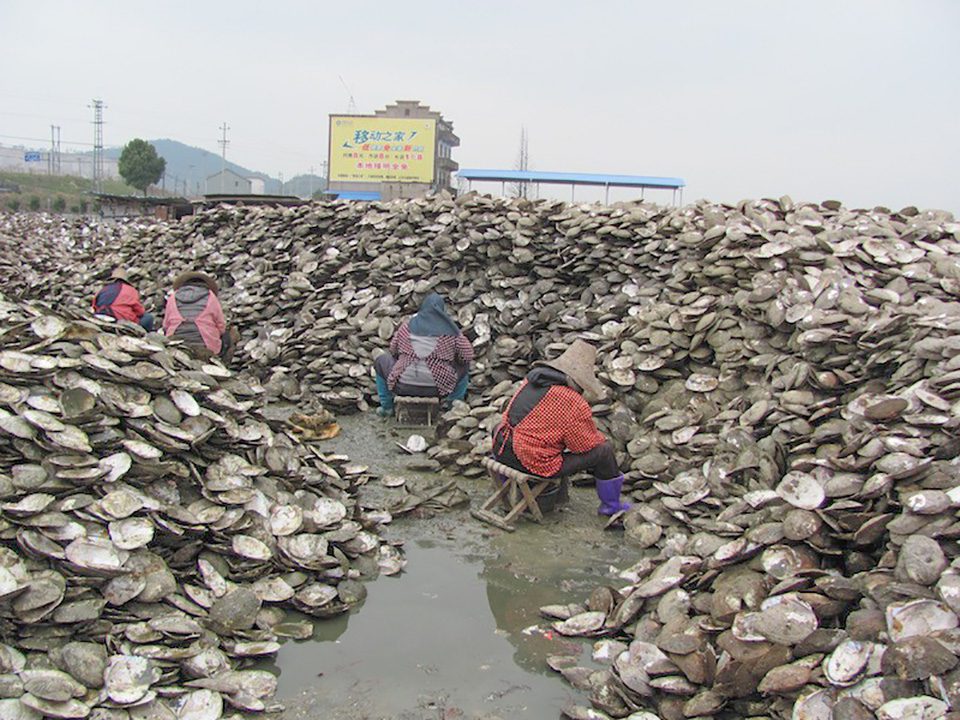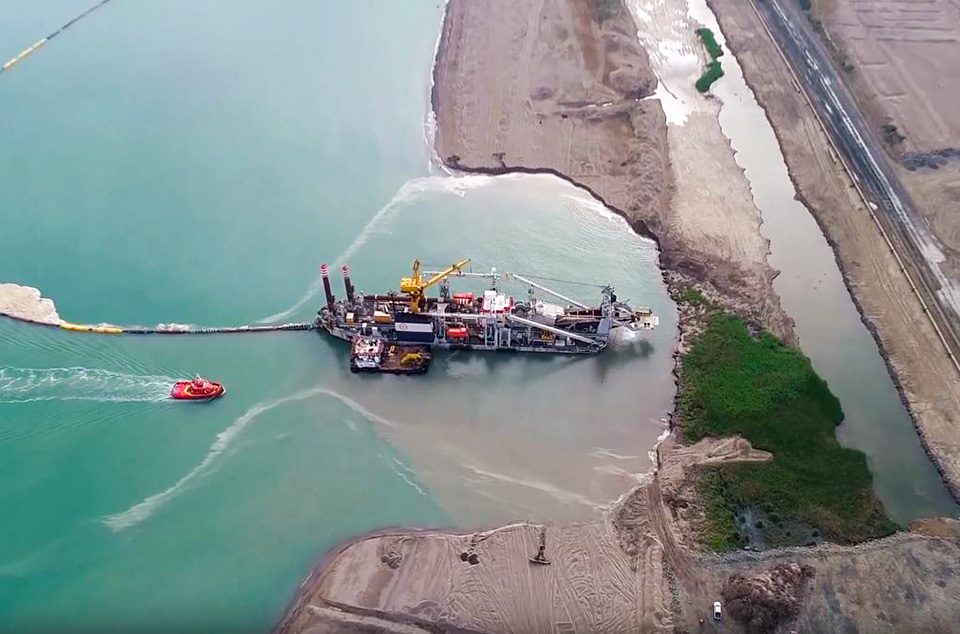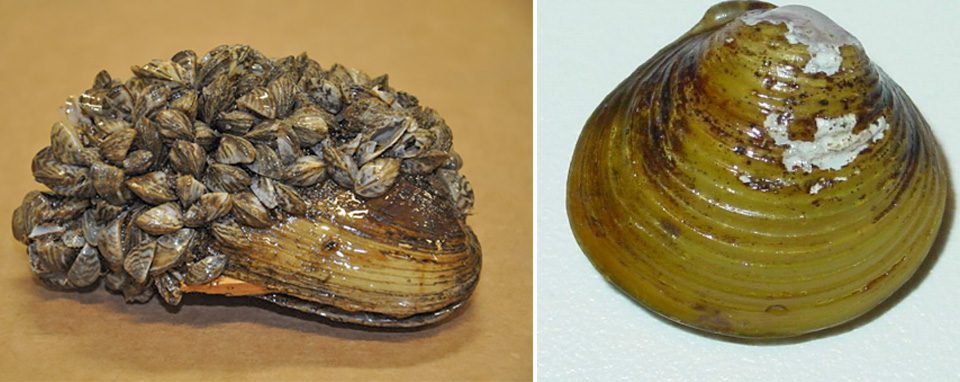1. Button industry In the late 1800’s and early 1900’s freshwater mussel shell was collected to make buttons. Your grandmother or great grandmother might still have a few buttons made of shell in her closet. In 1921 the 23-year-old industry was estimated to be worth 6 million dollars. Over the years, millions of freshwater mussels were harvested for the button industry. In the 1940’s, the button industry started using plastic instead of freshwater mussel shell to make buttons.
2. Pearl industry Today freshwater mussel shell is used to make pearls overseas. The freshwater mussel shell is harvested here, in the United States, and shipped overseas to the Asian market where it is crushed into little pieces. A small piece of shell (called the seed) is then placed between the mantle (thin layer of skin that lines the inside the freshwater mussel shell) and the shell of a pearl producing oyster. The seed under the mantle is uncomfortable for the pearl oyster, so the oyster starts to make a smooth round pearl. The pearl is a lot more comfortable than a rough piece of freshwater mussel shell. When the pearl is big enough, it is collected and sold to make jewelry.
The other reasons may be a little complex. Freshwater mussels may be disappearing because their ecosystem or environment (where they live) is changing. Their ecosystem may be changing in several ways.
1. Pollution Chemicals from factories and garbage that is dumped into the streams and lakes can harm or even kill freshwater mussels. Make sure you recycle used motor oil and properly dispose of household chemicals such as pesticides, herbicides, paint, paint thinner, poisons, and other chemicals. You can help keep the freshwater mussels healthy by not dumping trash or garbage in the water. Would you want someone to dump poison in your swimming pool?
Factory and chemical spills can pollute the waters of streams and lakes.
2. Dams The construction of a dam on a stream changes the stream environment by stopping the flow of water. Some freshwater mussels do not like slow moving water. If these freshwater mussels are trapped in the slow waters behind the dam they may not survive.
This is a dam on a large river.
3. Dredging Dredging is the removal of sand, gravel (rocks the size of marbles), and cobble (rocks the size of baseballs) from the bottom of a stream or lake. Large shovels or suction hoses are used to remove the stream or lake bottom. If you are a freshwater mussel living on the stream or lake bottom you will be carried away along with the sand, gravel, and cobble and piled up on land. Freshwater mussels cannot survive on land.
This machinery is dredging in a river.
4. Invaders There are two kinds of bivalves from other countries that now call the United States home; the zebra mussel (left) and the Asian clam (right). Both of these bivalves are hurting the freshwater mussels that are native to the United States. The zebra mussels attach themselves to the outside of the freshwater mussels’ shell. This makes it hard for the freshwater mussel to move around and eat. The Asian clam does not attach to freshwater mussels, but it does eat up all of the food, leaving very little for the freshwater mussels to eat.
Source The University of Vermont. https://www.uvm.edu/





